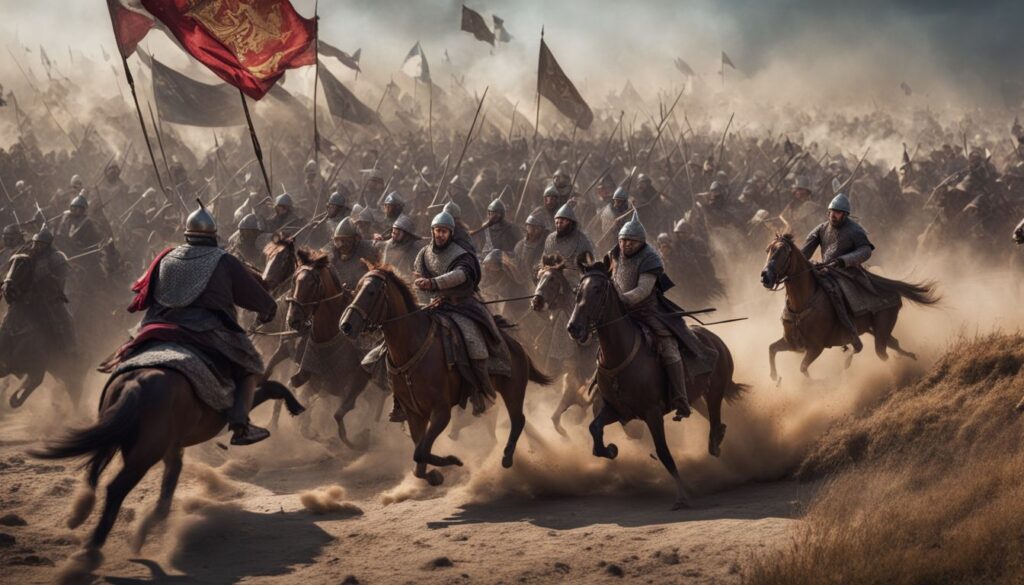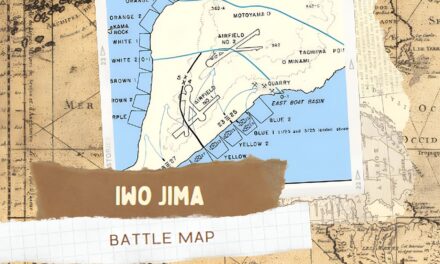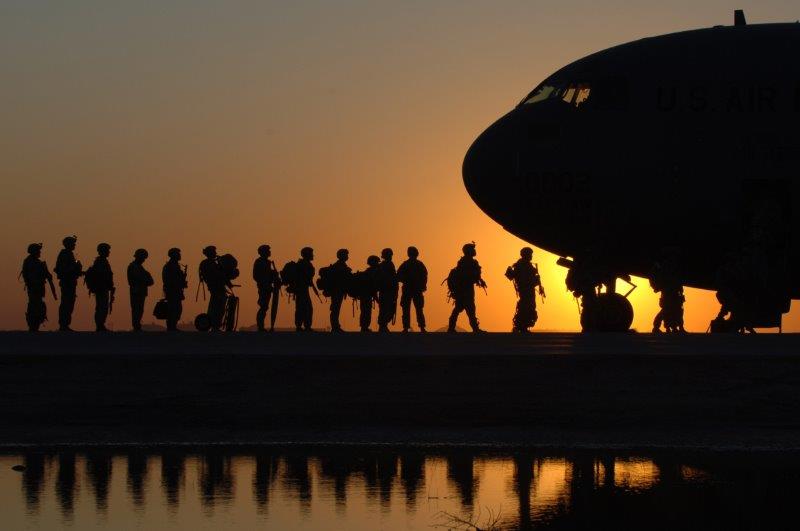The clash of empires often reaches a crescendo in a defining battle, one that reshapes the course of history. For students and historical enthusiasts tracing the ebb and flow of mighty civilizations, understanding these critical moments can be both challenging and thrilling.
If you've ever wondered how a single conflict could alter the destiny of nations, look no further than the Battle of Angora 1400. Interesting enough this particular battle is sometime referred to as the Battle of Ankara due to its proximity to Ankara in Anatolia.
One staggering fact about this colossal confrontation is that it pitted two legendary leaders against each other: Ottoman Sultan Bayezid I and Timur (Tamerlane), ruler of the Timurid Empire.
Similar to our break down of the historical Battle of Diu. This article unpacks the complexities surrounding another epic showdown, dissecting strategies, consequences, and historical implications. Dive into an era-defining event to grasp how it set crucial precedents for world affairs.
Get ready to unravel a pivotal chapter from our past—one with echoes still resounding today.
Key Takeaways
- The Battle of Angora was a major conflict between the Ottoman Empire, led by Sultan Bayezid I, and the Timurid Empire under Tamerlane. This battle halted Ottoman expansion and led to their leader's capture.
- Tamerlane's victory caused a power vacuum in the Ottoman Empire, leading to a civil war known as the Ottoman Interregnum that lasted over a decade. It also boosted Tamerlane’s reputation but did not prevent his empire from declining after his death.
- Strategic troop placement and the use of war elephants played key roles in Tamerlane’s triumph over Bayezid I at Angora. The defeat forced other regions under Ottoman control to reconsider their allegiances.
- The aftermath of Angora had far - reaching effects, including delaying European confrontations with Ottomans and allowing Christian realms time to strengthen defenses against future threats.
- The battle is significant historically for its impact on regional power dynamics; it changed political landscapes across Asia Minor and Europe, influencing wars and politics for centuries following.
Background of the Battle of Angora
The Battle of Angora, fought in the early 15th century, was precipitated by a burgeoning conflict between two formidable powers: the Ottoman Empire led by Bayezid I and the Central Asian conqueror Tamerlane.

This clash stemmed from deep-rooted political ambitions and strategic maneuvers within the volatile landscape of Anatolia and beyond, setting the stage for an encounter that would reshape regional dominance.
The two major contenders: Bayezid I and Tamerlane
Bayezid I led the Ottoman Empire with ambition and strength. He aimed to expand his territory across Anatolia and into Europe. His forces conquered key cities and he threatened Constantinople, stoking fear in neighboring rulers.
Bayezid's aggressive moves set him on a collision course with powerful leaders beyond his realm.
Tamerlane, also known as Timur, ruled Central Asia as a formidable conqueror. With an empire stretching from India to Russia, he was renowned for his military strategy and brutal victories.
Tamerlane sought to restore Mongol power and saw Bayezid's expanding influence as a direct challenge to his own ambitions.
Their rivalry would come to define the era, culminating in a clash that reshaped the region's future. The stage was set for these two giants of history to face off at the Battle of Angora—a confrontation that promised significant changes in the military and political landscape leading up to the battle.
Reasons for their conflict
Tamerlane and Bayezid I had ambitions that clashed, sparking their conflict. Tamerlane wanted to restore the Mongol Empire's past glory and saw the growing Ottoman power as a threat.
He aimed to expand his own empire into Ottoman territories. Bayezid I was building a strong Ottoman state and sought control over Anatolian Turkish principalities. These were under Tamerlane’s influence, which led to tension.
Both leaders felt the pressure of each other's expansionist policies. This added fuel to their rivalry. The Battle of Angora would become the stage where both would test their might for supremacy in the region.
Each hoped victory would secure them greater power and influence over vast lands stretching across Asia Minor to Europe.
| Feature | Sultan Bayezid I (Ottoman Empire) | Tamerlane (Timurid Empire) |
|---|---|---|
| Empire Expansion Aim | Expand territory across Anatolia and Europe, threatening Constantinople | Restore Mongol power, expand into Ottoman territories |
| Military Strategy | Known for disciplined infantry and elite cavalry, including Janissaries. Employed heavy knights from European allies | Utilized skilled horse archers for swift tactical movements, employed war elephants for psychological advantage |
| Strategic Positioning | Positioned forces head-on against Timur, with Janissaries at the center and cavalry on the flanks | Chose battlefield advantageously, employed a semi-circle formation, and planned a surprise attack |
| Outcome of the Battle | Defeated; Bayezid captured, leading to a power vacuum and civil war within the Ottoman Empire (Ottoman Interregnum) | Victorious; Boosted reputation but did not prevent the decline of his empire after his death |
| Aftermath & Legacy | The defeat led to a period of weakness and division within the Ottoman Empire, delaying expansion | Temporarily strengthened Timurid position, but empire declined post-Tamerlane due to succession issues |
| Impact on Regional Dynamics | Halted Ottoman expansion, allowing Christian realms in Europe time to strengthen defenses | Boosted Timur’s reputation but ultimately led to the fragmentation of his empire |
| Significance in History | The battle was a critical moment that demonstrated the vulnerability of the expanding Ottoman Empire | Highlighted Tamerlane’s military prowess and strategic genius, though his empire's impact was short-lived |
Military and political landscape leading up to the battle
Bayezid I had his eyes set on expanding the Ottoman Empire. He conquered lands and grew his power quickly. Many rulers felt threatened by this, including Tamerlane. He led the Timurid Empire with a strong hand and did not like rivals.
Tensions rose as both empires wanted more control in Asia Minor and the surrounding regions. They built large armies ready to fight for dominance. The Ottomans trusted their skilled infantry and powerful cavalry units, while Tamerlane's forces were famous for their horse archers and swift tactics.
As troops gathered near Ankara, both sides knew a big battle was coming soon. Leaders planned their strategies carefully, each hoping to outsmart the other on the battlefield.
Forces and Battle Positioning
The vast armies amassed by Sultan Bayezid I of the Ottoman Empire and the revered conqueror Tamerlane, leader of the Timurid dynasty, foreshadowed an epic confrontation that would unfold at Angora.

Their strategic positioning on the battlefield, with each eyeing supremacy over Anatolia, set the stage for a clash of monumental proportions and enduring historical impact.
The armies and their leaders
Bayezid I led the Ottoman forces with fierce determination. His army was known for its disciplined infantry and elite cavalry, including the famous Janissaries. These soldiers were loyal to Bayezid and trained to fight in close combat.
On the other side, Tamerlane commanded a diverse force drawn from his vast empire. Among them were skilled horse archers who could shoot accurately while moving fast. His troops were also adept at using swift tactical movements on the battlefield.
Each leader had distinct strategies and trusted generals to execute their plans. They prepared their men for what would become a defining moment in history. Next came strategic positioning of troops, crucial for gaining an advantage before the battle began.
Strategic positioning of troops
The Battle of Angora in 1400 saw two great armies face off. Leaders used smart moves to position their soldiers.
- Tamerlane led the Mongol forces with a cunning plan.
- He knew the land well and chose a battlefield that gave his army an advantage.
- His troops formed a semi - circle, forcing Bayezid's men into a tight spot.
- Tamerlane's archers stood ready at the front, their arrows aimed at the Ottoman lines.
- Elephants covered in armor scared the Ottoman horses and caused chaos.
- The Mongols' left flank was angled to hit the Ottomans from the side.
- On the right, Tamerlane placed his best fighters to push against Bayezid’s core units.
- He kept some forces hidden, planning a surprise attack once the battle began.
- Bayezid I positioned his Ottoman army facing Tamerlane’s troops head - on.
- The sultan put his janissaries, elite soldiers, right at the center for strength.
- His cavalry was on both sides of his infantry, ready to charge at enemy lines.
- Bayezid also had allies from Europe with heavy knights in armor join him.
- To protect against arrows, Ottoman soldiers carried large shields and wore thick armor.
Battle of Angora
The clash at Angora, unfolding officially on July 20th, 1402, witnessed an epic confrontation between the formidable forces of Sultan Bayezid I and the legendary warlord Tamerlane. This pivotal conflict saw strategies collide and fates intertwine, resulting in a day that would shape the geopolitical contours of the region for centuries to come.

Description of the battle
On July 20, 1402, the forces of Ottoman Sultan Bayezid I clashed with those of Timur near the city of Angora. Timur's troops were well-prepared and used clever tactics to gain an advantage.
They pushed hard against the Ottomans, who fought bravely but struggled under the pressure.
Arrows filled the sky as Timur's archers unleashed volleys on Bayezid's men. Elephants scared horses and soldiers alike, adding chaos to the battlefield. In a critical move, some of Bayezid’s own allies switched sides during combat, tipping the scales in favor of Timur.
Fierce fighting continued for hours until finally, Bayezid found himself captured by his adversaries—a moment that marked a significant turning point in history.
Did You Know: The Ottoman army under Bayezid I was so confident of victory that they brought along a chained contingent of Christian prisoners to take back as slaves after their expected win. However, it was Timur who prevailed, releasing those prisoners after the battle in a major blow to Ottoman morale.
Key events and turning points
The Battle of Angora was a fierce clash that changed history. Sultan Bayezid I and Tamerlane led their forces into a decisive confrontation.
- Tamerlane used clever tactics to lure Bayezid into attacking. He pretended to retreat, which made Bayezid move his troops forward.
- The Timurid army ambushed the Ottoman forces. Timur's men came from hidden positions and attacked with full force.
- Elephants scared the Ottoman horses. Tamerlane's use of war elephants caused chaos in the enemy ranks.
- Bayezid's elite Janissaries fought bravely but were outnumbered. These soldiers could not turn the battle despite their skill.
- Tamerlane cut off the Ottoman supply lines. This move left Bayezid's troops without resources.
- An important turning point happened as some of Bayezid’s allies switched sides during the battle. They joined forces with Tamerlane, weakening the Ottoman position.
- The capture of Sultan Bayezid marked the end of the fight. His capture by Timur's forces was critical to their victory.
- Many Ottomans were killed or surrendered after their leader was taken. Without their commander, they stood little chance against Timur’s army.
Outcome
Tamerlane's forces crushed Bayezid I at the Battle of Ankara. This victory led to Bayezid dying in captivity and a significant loss for the Ottoman Empire. It marked a turning point, causing a power vacuum known as the Ottoman Interregnum.
The defeat disrupted the empire's expansion and demonstrated Tamerlane's might. Sultan Bayezid's army was overwhelmed by Timur's tactics and the sheer number of troops. Many soldiers on the Ottoman side were killed or surrendered.
The battle also disturbed politics within Europe and Asia, shaping future conflicts. As both empires regrouped after this clash, their leaders' decisions would influence regional stability for years to come.
Aftermath
The Battle of Angora's aftermath saw the once-mighty Ottoman Empire reel from its defeat, leading to a significant shift in regional power dynamics that reverberated through subsequent centuries.

Impact on the Ottoman and Timurid empires
The Battle of Angora dealt a heavy blow to the Ottoman Empire. Sultan Bayezid I was captured and later died in captivity, leaving his empire vulnerable and leaderless. This event triggered a civil war among Bayezid's sons, known as the Ottoman Interregnum.
It led to a period where the Ottoman territories were divided and weakened for over a decade.
For Tamerlane and his Timurid Empire, victory over the Ottomans boosted their reputation as one of the most formidable powers of that time. However, despite this success, Tamerlane's empire began to decline after his death in 1405 due to struggles over succession.
His heirs could not maintain the vast territories he conquered, which eventually fragmented into smaller states.
Did You Know: Timur used the captured Ottoman Sultan Bayezid I as a footstool to mount his horse after the Battle of Angora. This humiliating act signaled the crushing victory over the previously undefeated Bayezid and his mighty Ottoman empire.
Political and military consequences
Bayezid I's defeat at the Battle of Angora sent shockwaves through the Ottoman Empire. Power struggles and civil strife followed, leading to a period known as the Ottoman Interregnum.
This chaos weakened the Ottomans and delayed their expansion for years. On the other side, Tamerlane emerged stronger, his victory bolstering his reputation as a formidable conqueror.
The battle also altered alliances and power dynamics in the region. Many states that were once under Ottoman control saw a chance to assert their independence or switch allegiances without fear of immediate reprisal from a weakened empire.
Moreover, Europe breathed easier as an imminent Ottoman threat faded temporarily with Bayezid's capture, allowing Christian realms more time to prepare for future confrontations.
Significance of the Battle of Angora
Exploring the historical magnitude of the Battle of Angora reveals its pivotal role in shaping the geopolitical dynamics between empires, a focus that promises to unravel how this confrontation steered the course of regional and world history.

Historical turning point
The Battle of Angora stands as a pivotal event in history. It marked the moment when Timur's forces clashed with those of the Ottoman Sultan, Bayezid I. This confrontation shook the foundations of both empires and changed their courses forever.
The clash led to significant shifts in regional power dynamics.
This battle altered political landscapes across Asia and Europe. With Bayezid captured, it created a power vacuum within the Ottoman Empire. This pause in Ottoman expansion gave other powers room to grow and reshape borders and alliances.
Hence, its historical significance lies in how it influenced later wars, politics, and territorial changes.
Did You Know: The Battle of Angora marked one of the most incredible reversals of fortune in medieval warfare. Before the battle, Bayezid had consolidated Ottoman control over the Balkans and Anatolia, making him the most powerful ruler in the region. But his defeat saw the Ottoman empire almost wiped out, with most territories lost within a year after Angora.
Influence on future events
Events at Angora shifted the power balance in the Middle East and Eastern Europe. Timur's victory stopped the Ottoman expansion for a while, giving other regions room to grow stronger.
The defeat at Angora left the Ottoman Empire without a leader and vulnerable to attacks. It took years for them to recover their strength.
Europe saw this as an opportunity to fortify against future threats. The battle showed that even powerful empires could stumble if challenged correctly. With Bayezid captured, new leaders arose within the Ottomans, changing how they tackled conflicts from then on.
This reshaping of strategies influenced battles and politics for centuries after Angora.
Moving forward, let's delve into the aftermath of this pivotal clash and its lasting effects..
Conclusion In The Battle of Angora 1400
The Battle of Angora was a pivotal moment in history. It reshaped empires and changed the course of future battles. This clash showed how leadership, strategy, and might can turn tides dramatically.

Such moments in history urge us to reflect on power's rise and fall. They inspire us to learn from the past as we look forward.
FAQs
1. What was the Battle of Angora and why is it important?
The Battle of Angora in was a fight between the Ottoman Empire led by Sultan Bayezid and Timur's forces. It changed history because it marked a turning point, showing the power struggle that altered the course of history.
2. Who fought in this significant battle?
Sultan Bayezid from the Ottoman side and Timur were the main leaders in this crucial event. Their armies clashed at Ankara on July 20, 1402.
3. Did any side win during the Battle of Angora?
Yes, Timur's army won after intense fighting where many Ottomans were killed or surrendered. This victory had far-reaching effects on history.
4. What caused the Battle of Angora to take place?
Primary reasons for this battle can be traced back to rivalries over territories and power among leaders like Timur and Bayezid which led to conflict near Sivas before reaching Ankara.
5. How did the outcome affect historical events afterward?
The result caused disruption within the Ottoman Empire which influenced its future developments significantly; it could even be linked to later challenges faced by their empire.
6. Does this battle still carry significance today in history lessons?
Absolutely! The immense historical significance due to its role in shaping political landscapes ensures that studying this battle remains vital for understanding past events that have shaped present conditions.











